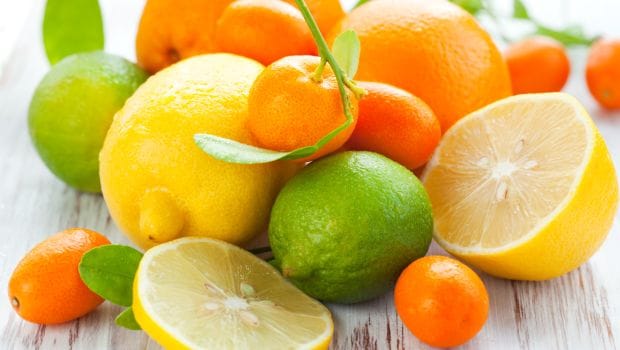Lemon Fruit Or Vegetable
Lemon Fruit Or Vegetable
The lemon, Citrus limon (L.) Osbeck, is a species of small evergreen tree in the flowering plant family Rutaceae, native to South Asia, primarily North eastern India. The tree's ellipsoidal yellow fruit is used for culinary and non-culinary purposes throughout the world, primarily for its juice, which has both culinary and cleaning uses.[2] The pulp and rind (zest) are also used in cooking and baking. The juice of the lemon is about 5% to 6% citric acid, with a pH of around 2.2, giving it a sour taste. The distinctive sour taste of lemon juice makes it a key ingredient in drinks and foods such as lemonade and lemon meringue pie.
Read more
The origin of the lemon is unknown, though lemons are thought to have first grown in Assam (a region in northeast India), northern Burma or China.[2] A genomic study of the lemon indicated it was a hybrid between bitter orange (sour orange) and citron.[3][4] Lemons entered Europe near southern Italy no later than the second century AD, during the time of Ancient Rome.[2] However, they were not widely cultivated. They were later introduced to Persia and then to Iraq and Egypt around 700 AD.[2] The lemon was first recorded in literature in a 10th-century Arabic treatise on farming, and was also used as an ornamental plant in early Islamic gardens.[2] It was distributed widely throughout the Arab world and the Mediterranean region between 1000 and 1150.[2] The first substantial cultivation of lemons in Europe began in Genoa in the middle of the 15th century. The lemon was later introduced to the Americas in 1493 when Christopher Columbus brought lemon seeds to Hispaniola on his voyages. Spanish conquest throughout the New World helped spread lemon seeds. It was mainly used as an ornamental plant and for medicine.[2] In the 19th century, lemons were increasingly planted in Florida and California.[2] In 1747, James Lind's experiments on seamen suffering from scurvy involved adding lemon juice to their diets, though vitamin C was not yet known.[2][5] The origin of the word "lemon" may be Middle Eastern.[2] The word draws from the Old French limon, then Italian limone, from the Arabic laymūn or līmūn, and from the Persian līmūn, a generic term for citrus fruit, which is a cognate of Sanskrit (nimbū, “lime”).[6]
Lemon, (Citrus ×limon), small tree or spreading bush of the rue family (Rutaceae) and its edible fruit. Lemon juice is a characteristic ingredient in many pastries and desserts, such as tarts and the traditional American lemon meringue pie. The distinctive astringent flavour of the fruit, either fresh or preserved, is also used to enhance many poultry, fish, and vegetable dishes worldwide. Lemonade, made with lemon, sugar, and water, is a popular warm-weather beverage, and the juice itself is commonly added to tea. Citric acid may amount to 5 percent or more by weight of the lemon’s juice, which is also rich in vitamin C and contains smaller amounts of the B vitamins, particularly thiamin, riboflavin, and niacin.
The lemon was introduced into Spain and North Africa sometime between the years 1000 and 1200 ce. It was further distributed through Europe by the Crusaders, who found it growing in Palestine. In 1494 the fruit was being cultivated in the Azores and shipped largely to England. The lemon was thought by 18th-century Swedish botanist Carolus Linnaeus to be a variety of citron (Citrus medica), though it is now known to be a separate hybrid species.
As a cultivated tree, the lemon is now grown to a limited extent in most tropical and subtropical countries. Lemon trees for commercial planting are usually propagated by grafting or budding the desired variety on seedlings of other Citrus species, such as the sweet orange, grapefruit, mandarin orange, sour orange, or tangelo. Seedlings of these species are superior to lemon seedlings as rootstocks because they are more uniform and less susceptible to the various crown- and foot-rot diseases.


